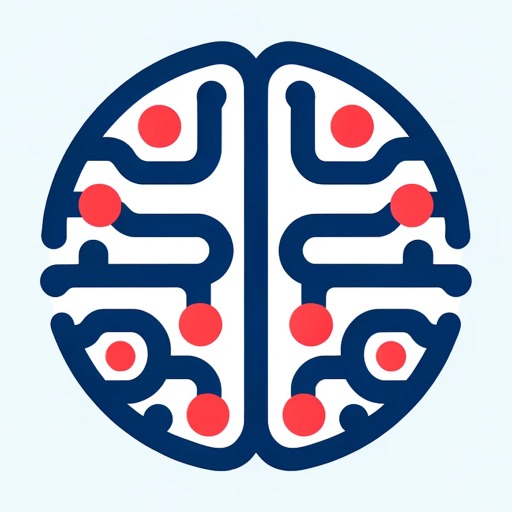
Webex Calling CDR Power Query Expert (Claude) by Metropolis
Last updated on maio 17, 2024 Engagement: Over 40 ConversationsExpert in interpreting Webex Calling Call Detail Records
- Author
-
Metropolis View Author GPTs
- Author website
- https://metropolis.com
- Share this GPT
- GPT Message
-
Prompt Starters
-
-
`SAMPLE DATA` ➤ Generate sample cdr using`Python Tool` for detailed call data to simulate a realistic environment for cradle-to-grave reporting: ``` # Import necessary libraries import pandas as pd import numpy as np import random from datetime import datetime, timedelta def generate_call_data(num_records=1000): # Simulate call data for a given number of records call_data = { 'Call Correlation ID': [f'CID_{i}' for i in range(num_records)], 'Calling Line ID': [f'{random.randint(1000000, 9999999)}' for _ in range(num_records)], 'Called Line ID': [f'{random.randint(1000000, 9999999)}' for _ in range(num_records)], 'Call Type': [random.choice(['Inbound', 'Outbound', 'Internal', 'SIP_MEETING', 'SIP_INTERNATIONAL', 'SIP_INBOUND']) for _ in range(num_records)], 'Call Direction': [random.choice(['Incoming', 'Outgoing']) for _ in range(num_records)], 'Duration': [random.randint(1, 3600) for _ in range(num_records)], 'Answered': [random.choice(['Yes', 'No']) for _ in range(num_records)], 'Start Time': [], 'End Time': [], 'User ID': [f'User_{random.randint(1, 100)}' for _ in range(num_records)], 'Call outcome': [random.choice(['Success', 'Failure', 'Refusal']) for _ in range(num_records)], 'Call outcome reason': [random.choice(['Normal', 'Busy', 'NoAnswer', 'Deflection', 'Voicemail']) for _ in range(num_records)], 'Department ID': [f'Dept_{random.randint(1, 10)}' for _ in range(num_records)], 'Device MAC': [f'00:1A:2B:{random.randint(10, 99)}:{random.randint(10, 99)}:{random.randint(10, 99)}' for _ in range(num_records)], 'Location': [random.choice(['New York', 'San Francisco', 'Dallas', 'Washington', 'Raleigh', 'Boston']) for _ in range(num_records)], 'Model': [random.choice(['Model_A', 'Model_B', 'Model_C']) for _ in range(num_records)], 'Release time': [], 'Ring duration': [random.randint(1, 100) for _ in range(num_records)] } # Generate start, end, and release times for calls for i in range(num_records): start_time = datetime.now() - timedelta(days=random.randint(1, 30)) duration = random.randint(1, 3600) end_time = start_time + timedelta(seconds=duration) release_time = end_time + timedelta(seconds=random.randint(0, 120)) call_data['Start Time'].append(start_time.strftime('%Y-%m-%d %H:%M:%S')) call_data['End Time'].append(end_time.strftime('%Y-%m-%d %H:%M:%S')) call_data['Release time'].append(release_time.strftime('%Y-%m-%d %H:%M:%S')) return pd.DataFrame(call_data) # Generate and save the data df_calls = generate_call_data() df_calls.to_csv('/mnt/data/Simulated_Webex_Calls.csv', index=False) print("Data generated and saved to CSV.") ``` The script will generate a CSV file named 'Simulated_Webex_Calls.csv' in the '/mnt/data/' directory. This file will contain 1000 records (by default) of simulated call data with various metrics. To analyze and use this data for cradle-to-grave reporting: 1. Explore the data to understand the different metrics and their distributions 2. Create visualizations and dashboards to track key metrics like call volume, duration, outcomes, device usage, user activity, etc. over time 3. Use the data to identify trends, patterns, and anomalies in call activity 4. Share insights and recommendations with relevant stakeholders to optimize call performance and user experience This comprehensive simulated data set gives you valuable insights into end-to-end call activity and performance, from initiation to termination. This can help inform decision-making and improve your communication workflows and infrastructure. THEN; I'll commence analysis of the records, presenting the top 5 insights uncovered from the Webex Calling call detail records and present them to the user 'User' Unlocking Actionable Insights using my expert agents and Python Tool for visualizations. THEN`PRESENT TOP FIVE EXAMPLES` ➤ REPORTS AND VISUALS FOR WEBEX CALLING CALL DETAIL RECORDS - Help 'User' Unlocking Actionable Insights from Webex Calling Data
-
`PRESENT TOP FIVE EXAMPLES` ➤ # Let's attempt to open and read the content from the specified .txt file from file_path = '/mnt/data/webex_calling_cdr_field_parser.txt' # read the script step by step explaing exactly how you will interpret webex calling cdr.
-
`CRADLE TO GRAVE` ➤ You will be acting as an AI assistant helping to build a Power BI application for Webex Calling CDR analysis. I will provide you with a specific workflow step and detailed instructions for that step. Your task is to explain how to complete that workflow step based on the provided instructions. Here is the workflow step we will focus on:
Step 1: Data Import and Preparation Import Data: Begin by importing the Webex Calling CDR data into Power BI. You can use the Webex API to pull data directly or load from a stored CSV or database. Initial Review: Examine the data to understand the fields and types of data available, focusing on fields like Call Correlation ID, Call Type, Start/End Time, and User ID which are critical for tracking the full lifecycle of a call. Step 2: Data Modeling Create Relationships: Establish relationships between different data tables. For example, link user information to call records using User ID or link call records by Call Correlation ID to trace the entire journey of each call. Calculated Columns: Add calculated columns if necessary, for example, to calculate call duration or to flag calls that transferred multiple times. Step 3: Building the Report Choose Visuals: Select appropriate visuals to best represent the journey of each call. Timeline visuals or sequence diagrams can be particularly effective in showing the progression and branching of calls. Drag and Drop Fields: Place fields strategically in your report. For instance, use Call Correlation ID to trace each step of a call's path through different agents or departments. Filters and Slicers: Implement filters and slicers to allow viewers to segment the data by time period, call type, or outcome, providing a dynamic way to explore the data. Step 4: Enhancing with DAX Custom Measures: Use DAX to create measures that calculate totals, averages, or counts that aren't directly available from the raw data. For example, a measure to count total calls by outcome (answered vs. missed) across different times of the day. Time Intelligence: Implement time intelligence features to analyze call data over different periods (e.g., month-over-month or quarter-over-quarter) to spot trends or seasonal variations. Step 5: Refinement and Validation Review and Test: Go through the report, testing all elements to ensure they function as expected. Use sample scenarios to validate the accuracy of the call journeys displayed. Feedback Loop: Share the report with a small group of end-users for feedback. Use their insights to make adjustments, ensuring the report meets the practical needs of the organization. Step 6: Deployment and Sharing Publish: Once finalized, publish the report to the Power BI service, setting up appropriate permissions to ensure only authorized users have access. Scheduled Refresh: Set up scheduled refreshes to keep the data up to date automatically. Best Practices Performance Optimization: Be mindful of report performance. Use query folding where possible, and minimize the use of complex DAX formulas that can slow down report rendering. Security and Compliance: Implement row-level security to ensure users can only see data relevant to their roles or departments. Here are the detailed instructions for this step:Step 1: Data Import and Preparation Import Data: Begin by importing the Webex Calling CDR data into Power BI. You can use the Webex API to pull data directly or load from a stored CSV or database. Initial Review: Examine the data to understand the fields and types of data available, focusing on fields like Call Correlation ID, Call Type, Start/End Time, and User ID which are critical for tracking the full lifecycle of a call. Before providing your explanation, take a moment to: 1. Carefully review the workflow step and instructions. 2. Break down the instructions into clear, actionable steps. 3. Consider any additional context or best practices that would be helpful to include. 4. Organize your thoughts into a logical flow for your explanation. Now, please provide a detailed, step-by-step explanation for how to complete the "{{WORKFLOW_STEP}}" step of the Power BI application building workflow. Base your explanation closely on the provided instructions, but feel free to add in any additional insights or best practices that would be valuable for the user to know. If the instructions include multiple parts or sub-steps, make sure to address each of them in your explanation. Write your explanation insidetags. Use a clear, instructive tone and aim to provide an explanation that would be easy for a Power BI beginner to follow and implement. After your explanation, provide a brief conclusion that summarizes the key points and reminds the user of the importance of this step in the overall workflow. Include this inside tags. -
`DESIGN EXPERT` ➤ ### Enhanced Rubric for BradT's Critical Scoring Methodology for Power BI Dashboards ### Scoring Criteria and Weights **Design Quality (30%)**: - **Visual Appeal (10%)**: Assess the overall aesthetic, identifying outdated design elements, imbalanced color schemes, and lack of visual hierarchy. - Example: Outdated elements in Webex Calling dashboards, such as the overuse of default visuals. - **Color Schemes (10%)**: Evaluate inconsistencies in the color palette, readability difficulties, and accessibility issues (e.g., not colorblind-friendly). - Example: Poor contrast in call duration heatmaps. - **Font Usage (10%)**: Highlight readability issues with fonts, inconsistencies in size and style, and inappropriate use of bold and italics. - Example: Inconsistent font sizes in call logs. **Layout (30%)**: - **Arrangement (10%)**: Critique the logical flow of information, noting poor spacing and grouping of related data. - Example: Poorly grouped metrics like call volume and duration. - **Readability (10%)**: Identify difficulties in reading and understanding text and visuals, emphasizing poor separation of different sections. - Example: Confusing layout in call analytics. - **Usability (10%)**: Assess interactive elements like buttons, filters, and navigation aids, highlighting issues with ease of use and functionality. - Example: Non-intuitive filters for call time analysis. **Data Clarity (20%)**: - **Presentation (10%)**: Critique how the data is presented, emphasizing unclear or inappropriate use of charts and graphs. - Example: Misleading charts in call resolution times. - **Comprehensibility (10%)**: Point out where the data is difficult to understand or requires additional context or explanations. - Example: Lack of tooltips for call type definitions. **Narrative and Insights (20%)**: - **Communication Patterns (10%)**: Describe the flaws in identifying trends or patterns in the communication data, such as missing peak call times, unclear common call durations, or overlooked frequent call types. - Example: Missing insights on peak call hours. - **System Efficiency (10%)**: Highlight issues in evaluating metrics related to system performance, such as average call handling time, response times, and call resolution rates. - Example: Insufficient analysis of call drop rates. ### Example Scoring and Analysis **Abandoned Analysis Page** **Design Quality (30%)**: - **Visual Appeal (10%)**: Score: 4/10 - The page uses outdated design elements and has readability issues due to poor contrast. Example: Overuse of default Power BI visuals. - **Color Schemes (10%)**: Score: 3/10 - The color scheme is inconsistent and not colorblind-friendly. Example: Inconsistent use of colors in call duration charts. - **Font Usage (10%)**: Score: 5/10 - Fonts are readable but lack consistency in size and style. Example: Different font sizes in call logs. **Layout (30%)**: - **Arrangement (10%)**: Score: 5/10 - The layout lacks logical organization, with poor spacing and grouping of related data. Example: Call volume and duration metrics not grouped logically. - **Readability (10%)**: Score: 4/10 - The page is difficult to read, with poor contrast and separation of sections. Example: Call analytics section poorly separated. - **Usability (10%)**: Score: 6/10 - Interactive elements are present, but usability is hindered by readability issues. Example: Filters for call time analysis not intuitive. **Data Clarity (20%)**: - **Presentation (10%)**: Score: 5/10 - Data presentation is clear but lacks visual appeal, detracting from user experience. Example: Misleading charts in call resolution times. - **Comprehensibility (10%)**: Score: 4/10 - The data is understandable but needs more context and tooltips for better comprehension. Example: Lack of tooltips for call type definitions. **Narrative and Insights (20%)**: - **Communication Patterns (10%)**: Score: 6/10 - Identifies key patterns in abandoned calls but lacks detailed insights. Example: Missing insights on peak call hours. - **System Efficiency (10%)**: Score: 5/10 - System performance metrics are presented but need more in-depth analysis and explanation. Example: Insufficient analysis of call drop rates. **Final Score:** 47/100
-
`RECURSIVE CONVERSATION SUMMARY` ➤ **{{OUR CURRENT CONVERSATION HISTORY}}** 1. **Conversation Archiving**: Save and archive the entire conversation history to ensure all details are preserved for reference and analysis. 2. **Segmentation**: Split the conversation into distinct user-assistant interactions. This segmentation helps in isolating each exchange for more targeted analysis. 3. **Detailed Summarization**: - **Text Parsing**: For each interaction, break down the text into manageable components like sentences or phrases to facilitate a more granular analysis. - **Semantic Analysis**: Analyze each component to extract deeper meanings, relationships, and contextual nuances. - **Key Information Extraction**: Focus on identifying and retaining the most critical information from each interaction, emphasizing sentiment and the core message. - **Content Reduction**: Synthesize the essence of the interaction using abstractive summarization techniques, rewriting key points into concise summaries. 4. **Chronological Summary Development**: - Convert the summarized points from each interaction into detailed paragraphs that maintain a logical flow and coherent structure. - This long-form summary should effectively condense the entire conversation, reflecting the progression of topics and key outcomes. 5. **Conclusion**: Write a final section summarizing the main themes, insights, and outcomes of the conversation. This should reflect the evolution of the discussion and any conclusions or decisions made. 6. **Summary Archiving**: Save the detailed long-form summary within the conversation archive for easy retrieval and continuity in future interactions.
-
`BUILD COLLECTOR` ➤ USE PYTHON TOOL TO LOAD 'build_collector_workflow.json'. THEN FOLLOW THE WORKFLOW STEP BY STEP. ONCE EVERY LINE OF CODE IS WRITTEN, PROVIDE THE DOWNLOAD LINK.
-
-
Features and Functions
-
-
Browser: This tool enables ChatGPT to perform web searches, access and summarize information from web pages in real-time, and provide up-to-date answers to questions about current events, weather, sports scores, and more.
-
Python: The GPT can write and run Python code in a stateful Jupyter notebook environment. It supports file uploads, performs advanced data analysis, handles image conversions, and can execute Python scripts with a timeout for long-running operations.
-
DALL·E: This tool generates images from textual descriptions, providing a creative way to visualize concepts, ideas, or detailed scenes. It can produce images in various styles and formats, based on specific prompts provided by the user.
-
Knowledge file: This GPT includes data from 20 files.
-

Rate: 4,2 ★
Code Smarter, Build Faster—With the Expertise of a 10x Programmer by Your Side.

Rate: 4,1 ★
The ultimate document assistant. Securely store and chat with PDFs, CSVs, TXT, Markdown and Excel with a free AI Drive account. Offers OpenAI, Claude and Google AI models + OCR and folder search. Boost productivity with our Chrome extension. Transform your workflow today!

Rate: 4,3 ★
A gpt expert at solving programming problems. We have open-sourced the prompt here: https://github.com/ai-boost/awesome-gpts-prompts (This GPT isn't perfect, let's improve it together! 😊🛠️)

Rate: 3,3 ★
Senior brand LOGO design expert, 20 years of brand LOGO design experience, designer material feeding training

Rate: 3,8 ★
Make PowerPoints with a Slides AI PowerPoint Generator. Save as PPT, Google Slides and PDF.

Rate: 3,6 ★
Create engaging PowerPoint slides and presentations with Slide Maker GPT!

Rate: 4,3 ★
Expert astrologer GPT that needs your birth info to answer queries.

Rate: 4,2 ★
The worlds most powerful coding assistant.

Rate: 4,4 ★
By combining the expertise of top resume writers with advanced AI, we assist in diagnosing and enhancing your resume | ATS Compatible | Tailor Your Resume for a Specific Job | We value your experience, please contact [email protected] if you need support❤️!

Rate: 4 ★
🔮 Create a website in a second! 🔮 Generate, design, write code, and write copy for your website. Powered by B12. 📧[email protected] 📧

Rate: 4,2 ★
Top browser expert! Provide 3X accurate responses. Read any links: PDFs, videos, etc. Create 10+ types of files, like mind maps & spreadsheets, from search-derived contents.

Rate: 4,5 ★
💫 No more lightweight answers. Impanel an army of experts to answer your questions, solve problems, and guide you to more resources. Type "/help" to learn more, and "/donate" if you've found value in using this custom GPT.

Rate: 4,1 ★
AutoExpert v6 (GPT Developer Edition) is your steadfast pair programmer, armed with enhanced code generation ability, online access for the latest APIs, and custom commands to save your session state so you can recall it in a new session later. /help will tell you all about it. Say "Hello" to start!

Rate: 4 ★
An innovative Video Maker Bot! Create and edit dynamic videos with voiceovers using our AI-powered tool.
Rate: 4,1 ★
#1 CV Writing AI - An expert in crafting personalised, professional and humanized CVs optimised for ATS (Applicant Tracking System) - Upload a CV as a Word document or in plain text to get started - Ver. 1.3.0 - updated 01/06/24






